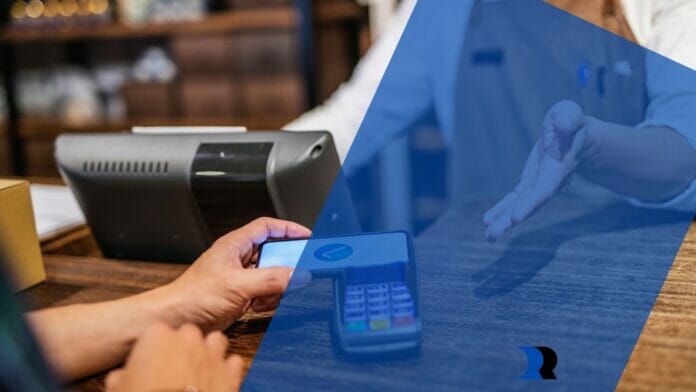Chargebacks are a frequent source of frustration for all business owners. They can result in penalties and fees—not to mention the damage they do to your customer relationship. But chargebacks aren’t the end of the world. In this article, we’ll explain what is a chargeback, how they work, and how you can avoid them.
What is a Chargeback?
A chargeback is a reversal of payment. It’s when a cardholder disputes the charges on their credit card, and the bank automatically reverses the transaction. The process is automated, so you don’t need to do anything for it to happen–but if you want to contest a chargeback and dispute it with your bank or credit union, you can do that too! Chargebacks are legal processes set up by Visa, MasterCard, American Express, and Discover in order to protect consumers from fraud and unauthorized transactions.
What is the Process of a Chargeback?
A chargeback is a request for the payment card issuer to reverse a transaction. It can be initiated by the customer, merchant, or bank. A chargeback can happen for one of three reasons: fraud, non-receipt/non-acceptance, or technical issues. A fraudulent transaction is when someone uses your card without permission; this often happens with stolen cards or if someone has copied down your information and used it without your knowledge.

If you don’t receive something that was purchased online (for example, if you ordered an item but never received it), this would be considered non-receipt/non-acceptance. Technical issues include things like poor network connectivity at either end during checkout or inaccurate information being entered into an online form by both parties involved in a purchase (such as address details not matching).
Who Pays the Cost of a Chargeback?
In the event of a chargeback, the merchant is responsible for paying any fees associated with it. This can include:
· A fee from your bank or credit card processor (if you’re using one)
· The amount of the original purchase plus any additional costs incurred by the customer in returning the product or service to them (for example, if they had to pay for shipping).
How Can You Avoid Chargebacks?
The best way to avoid chargebacks is by providing good service. This includes:
· Providing clear communication with your customers. If a customer has a question or concern, answer it as quickly and accurately as possible.
· Providing products that meet the needs of your customers–and delivering them on time!
· Having an excellent returns policy that makes it easy for customers to return items, they’re not happy with (or receive refunds).
How Can Chargeback Management Software Help You?
Chargeback management software can help manage your business and handle your chargebacks. It is the right management software for any big or small company, as it can handle the entire chargeback process from start to finish. Whether you need assistance with a single chargeback or a whole house of them, there are various tools that can be used to get the best results. From automated fraud checks to dispute resolution, this software has everything you need to keep your chargebacks under control.
– Chargeback management software or digital payment fraud detection solutions allows businesses to monitor, manage and prevent chargebacks, as well as provide detailed analytics on customer data. This can help improve businesses by streamlining manual processes and communicating chargebacks in a more automated service solution. Businesses also need technological solutions to optimize their third-party payments and tackle customer disputes in the most effective way possible. By automating the process, businesses can save time and money while resolving any issues quickly and efficiently. Additionally, this software can be integrated with other software solutions to help manage payments and other aspects of dispute resolution that would otherwise require manual effort.
– Chargeback management software can identify previous chargeback patterns, identify and track disputes, and analyze the ratio of successful versus unsuccessful resolution efforts. It can also provide merchant insight into possible fraud trends and identify potential claims in progress, helping to limit chargeback management companies from accumulating needless revenue loss.

This software will handle the chargeback management company’s responsibility in challenging disputable chargebacks and providing merchant companies with representing services that are needed to recover lost revenue. As a receiving merchant company, this software will help you to identify possible claims and reduce losses due to chargebacks by analyzing various aspects of your business.
– Chargeback management software helps to ensure comprehensive fraud prevention by providing a detailed view of the customer’s purchase history and tracking their behavior. It also helps to track prepaid cards and credit cards, allowing you to map chargebacks in real time. Additionally, this software can help you calibrate detection tools according to the risk associated with each transaction. Furthermore, with chargeback management software, you can manage multiple pathways and track payments across accounts.
Chargebacks May be Complicated, But They Can Be Avoided
Chargebacks are complex, but they can be avoided with good service and communication.
If you’re a business owner, chargebacks are one of the biggest threats to your company’s financial health. They can happen at any time–even if you’ve been providing excellent customer service for years. If you don’t have a plan in place before they occur, it will be difficult to recover from them financially or emotionally.Chargeback prevention is an important aspect of running any business that deals with credit card transactions online (or even offline).
When customers dispute their purchases for various reasons–whether it’s because they didn’t receive what was promised or because their credit card was used fraudulently–the issuing bank will reverse the original transaction and send funds back into their possession instead of yours. Unfortunately, this means lost revenue for both parties involved: You won’t get paid by customers who disputed their orders; meanwhile, those same customers might have ordered again had things gone smoothly!
Conclusion
Chargebacks can be a frustrating and costly experience for businesses, but they can also be avoided if you take the right steps. First, make sure that your customers are happy with their purchases and that they know how to contact you if there are any problems. The most important thing is communication between the seller and buyer!


